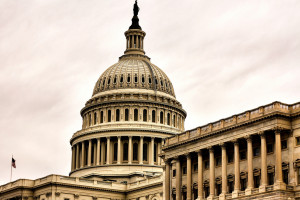On May 17, 2016, the Supreme Judicial Court of Massachusetts, in Isabel Kain & Others v. Department of Environmental Protection, held that the various existing greenhouse gas rules and initiatives promulgated by the Commonwealth of Massachusetts Department of Environmental Protection (DEP) did not satisfy the strict requirements of the state’s Global Warming Solutions Act. The purpose of the Act “is to attain actual, measurable, and permanent emissions reductions in the Commonwealth.” According to the Court, the unambiguous language of Section 3 (d) of the Act “requires the department to promulgate regulations that establish volumetric limits on multiple greenhouse gas emissions sources, expressed in carbon dioxide equivalents, and that such limits must decline on an annual basis.” DEP’s duty under the law was described by DEP as being mostly aspirational, but the Court held this was insufficient.
104(e) Letter Triggers Duty to Defend
According to the Ninth Circuit Court of Appeals, in Ash Grove Cement Co. v. Liberty Mutual Ins. Co., an unpublished opinion applying Oregon law, an insurer’s duty to defend begins with a “104(e) letter” from the EPA and continues for the duration of the regulatory process. In A “Suit” by Any Other Name: Ninth Circuit Rules CERCLA 104(e) Letter Triggers Duty to Defend, Pillsbury attorney Alex Lathrop discusses the Ash Grove ruling.
2nd Circuit Again Declines to Apply Alien Tort Statute to Corporate Activities Abroad
A recent U.S. Court of Appeals for the Second Circuit ruling is an important decision for corporations with foreign operations. In 2011, the U.S. Court of Appeals for the Second Circuit, in Kiobel v. Royal Dutch Petroleum Co., 642 F.3d 591 (2nd Cir. 2011), held that the Alien Tort Statute (ATS) does not regulate corporate conduct because customary international law does not recognize corporate liability, and therefore the litigation against the defendant could not proceed in the federal courts on the basis of the ATS. The defendant was alleged to have violated environmental human rights in the Nigeria. That ruling was very controversial, and an appeal was made to the U.S. Supreme Court, which upheld that ruling, but on different grounds. The Court held that the ATS is subject to a presumption against the extraterritorial application of domestic statutes, and that presumption had not been overcome by the plaintiffs. Other circuit have issued rulings which disagreed with the Second Circuit, but the original Kiobel decision is still the law of the circuit.
More Than Chickens, Lizards and Polar Bears – Environmental Case Law Update (Dec. 2015 – Mar. 2016)
This blog, although not brief, is a brief report on some of the significant environmental law and administrative cases decided in late December and the first quarter of 2016.
U.S. SUPREME COURT
FERC Final Rule re Demand Response Valid. On January 25, the Court, in FERC v. Electric Power Supply Assoc., reversed the D.C. Court of Appeals which had held that a final rule of FERC governing the “demand response” in which operators of wholesale electricity markets (regulated by FERC) pay electricity consumers (arguably subject only to state regulation) for commitments not to use electricity at certain times (such as those times when the demand for this power is greatest) was invalid. The Court held that the rule does not cross the lines setting the boundaries between the states and the federal government regarding the exercise of regulatory power over the sale of electricity.
Tension Between Feds and States Over Power Supply Planning
In Implications for the Power Sector of Recent Rulings by U.S. Supreme Court and FERC, Pillsbury attorney Michael Hindus, discusses an important issue the power industry is currently facing — the tension federal and state roles in power supply planning. Of note, is the U.S. Supreme Court’s April 19 decision in Hughes v. Talen Energy Marketing LLC et al. wherein the Court struck down on federal pre-emption grounds a Maryland program intended to support construction of a new 725 MW natural gas-fired generating plant in Maryland after concluding that the program invaded “FERC’s [exclusive] regulatory turf” over determination of wholesale rates for electricity. This was followed within days by FERC blocking the implementation of two Purchase Power Agreements approved by the Ohio Public Utilities Commission just days later. The tension likely will continue, and the sparring over this issue could intensify, given the states’ efforts to support continued operation of existing generating units and construction of new plants.
Adjacent = 1/4 Mile
In EPA Charts Middle Path for Making “Stationary Source” and “Major Source” Determinations, Matt Morrison and Bryan Stockton discuss the EPA’s new final rule applicable to upstream and midstream emission sources in the oil and gas sector. In particular, they discuss the EPA’s new definition of “adjacent,” a definition that is a key factor in determining whether there is a single “stationary source” for purposes of the Prevention of Significant Deterioration and Nonattainment New Source Review programs or a “major source” for purposes of the Clean Air Act Title V operating permit program.
How to Lose Your Contractor’s License in 90 Days (or Less)
Did you know that California’s Contractors’ State License Law, Bus. & Prof. Code §§ 7000 et seq., requires licensees to report various information to the Contractors State License Board (CSLB) “within 90 days” of the effective date or event?  Failure to report required events or information could result in the automatic suspension of your license and, in some cases, revocation of your license for 1 to 5 years. Some of these triggers include:
Failure to report required events or information could result in the automatic suspension of your license and, in some cases, revocation of your license for 1 to 5 years. Some of these triggers include:
Changes in Personnel (Bus. & Prof. Code § 7076)
California requires that certain persons be listed on the contractor’s license application and the licensee to otherwise keep the CSLB informed regarding certain persons affiliated with the license. Of course the qualifier for the license, i.e., the responsible managing officer (RMO) or responsible managing employee (RME) for each license classification must be identified. In addition, California corporations are required to provide the names of the president, secretary, and treasurer of the licensee. In contrast, foreign corporations are only required to provide the name of the president of the licensee. (Recall that officers that are identified will be required to be fingerprinted and undergo the background check.) When individuals listed on the license change, the CSLB requires the licensee to provide notice of such changes. The CSLB provides forms to change the following persons listed on a license:
- Application to Add New Personnel to Existing Corporate or Limited Liability Company License
- Application to Report Change of Title for Current Officer or Personnel of Existing Corporate or Limited Liability Company License – No Fee
- Application to Add a New Limited Partner to An Existing Partnership License
- Application to Add a New Limited Partner to an Existing Partnership License
- Disassociation Request for Officers, Qualifiers, a General Partner, a Limited Partner a Joint Venture Entity or Joint Venture (Bus. & Prof. Code § 7076(c), (e), (f))
- Death of a person licensed as an individual (Bus. & Prof. Code § 7076(a))
- Death of a general partner or limited partner (Bus. & Prof. Code § 7076(b), (d))
New Qualifier
Each California contractor’s license classification requires a qualifier, i.e., an individual that can pass any required trade exam and has the requisite experience. If a licensee will be unable to replace an exiting RME or RMO within the requisite 90-day period, a 90-day extension can be requested. An extension request will only be considered under certain circumstances, including that an application for replacing the qualifier has been filed, and only if timely sought. The CSLB provides forms to dissociate the qualifier and to replace him/her:
Change of Business Name or Address
A licensee may change its name if the new name does not indicate a change in the business entity, that the licensee qualifies for a classification other than the one(s) in which it is currently licensed, or a personnel change. Before changing its name with the CSLB, the licensee must change the name as registered with the Secretary of State’s Office; such a change may not be necessary if the licensee is adding a DBA to the existing corporate name. The CSLB provides a form to change your business name or address.
Changes to the Licensee Entity
Beware that a “change in business entity” likely will require a new contractor’s license (Bus. & Prof. Code § 7075.1). For example, if a general partner or qualifying partner leaves the partnership, the partnership license must be canceled, and if a corporation dissolves, merges, or surrenders the right to do business in California through the Secretary of State’s Office, the contractor license must be canceled. With regard to the latter, if the registration number assigned by the Secretary of State’s Office to a licensee changes, a new contractor license number will be required for the new corporation. The CSLB provides forms to cancel your license and to continue and reassign your license, if permitted:
- License Cancellation Request
- Dissolution, Merger, Surrender (Bus. & Prof. Code § 7076(h), (i), 7083)
- Continuance of a License Subject to Cancellation (The Registrar may grant a continuance for up to one year, but only under limited circumstances.)
- License Reassignment (Bus. & Prof. Code § 7075.1(c))
Changes to Required Bond(s)/Worker’s Compensation Insurance
If required, failure to have the required bond(s) and worker’s compensation insurance likely will expose your license to suspension until cured. With regard to the former, the CSLB can accept a bond as of its effective date, even though it was not received within 90 days retroactive to the bond’s effective date if you file a Request for Bond Acceptance.
Proof of Payment of a Citation, Arbitration Award and Judgment
Failure to timely pay a “construction-related” small claims court judgment or civil court judgment, or CSLB citation or arbitration decision and, more importantly, provide the CSLB with proof of payment will expose the licensee to immediate suspension of its license. With regard to payment of an arbitration award or judgment, care should be taken regarding the latter point. For CSLB arbitration awards, payment may be delivered to the CSLB for ultimate delivery to the consumer. For other payments, be sure to obtain some sort of proof of acceptance of the payment – a copy of a check, even a cashier’s check or money order is not proof that it was delivered to the payee.
Miscellaneous Requirements
Beware of other miscellaneous notice-related requirements, including the following:
- Home Improvement Salesperson Cessation of Employment
- Asbestos Abatement Licensee’s Registration with DOSH (Tit. 16, Div. 8, Art. 3 § 832.22(c))
- Proof of Arrestee’s Disposition of Matter (Bus. & Prof. Code § 7069.1)
Other Events With a Shorter Window for Resolution
Don’t assume that you will always have 90 days to report an event to the CSLB. Typically communications from the CSLB will indicated when a response is required and you should take care to promptly comply with any such deadlines. If you are unsure, review the CSLB’s website for guidance or call to confirm what rule applies. Events with shorter reporting deadlines include:
- Payment of a Citation ~ Due within 15 days of issuance (barring appeal)
- Payment of Amounts Due from a CSLB Arbitration Decision ~ Due within 30 days
- Proof of Resolution of Outstanding Liability ~ Due within 60 days
California is not the only state that requires licensees to report events like those identified above. Licensees should be aware of these common triggers to reporting obligations and take care when their business operations are undergoing change, including, but not limited to, changes in business operations and key personnel, or undergoing turmoil, including, by way of example only, a troubled project.
Photo: Steve Bowbrick, 90, Taken April 13, 2010 – Creative Commons
A Development Life Cycle Map for Your Path
 Our clients asked and we responded. From planning to disposition, Pillsbury’s Development Life Cycle Map illustrates the capabilities of Pillsbury attorneys to represent clients as they face eleven key stops along The Path. Designed as a quick reference, our Development Life Cycle Map is available in hard copy and digitally.
Our clients asked and we responded. From planning to disposition, Pillsbury’s Development Life Cycle Map illustrates the capabilities of Pillsbury attorneys to represent clients as they face eleven key stops along The Path. Designed as a quick reference, our Development Life Cycle Map is available in hard copy and digitally.
Photo: Mark Morgan, Eleven, Taken July 27, 2014 – Creative Commons
Protesting a Win
In Awardee Protests: A New Horizon?, my colleague John Jensen and I discuss a new decision from the U.S. Court of Federal Claims — National Air Cargo Group , Inc., v. U.S. — that opens the door to the possibility of a bid protest by an awardee under a multiple-award indefinite delivery, indefinite quantity (IDIQ) contract. Previous decisions had held that a multiple-award IDIQ awardee lacks standing to protest the government’s award of additional contracts.
Stay in your Lane: Three Recent, Significant Rulings Enforce State and Federal Separation of Powers
Builders and contractors may be interested to learn that, in the past few days, the Supreme Courts of Texas  and Colorado, and the U.S. Court of Appeals for the DC Circuit have issued significant rulings addressing the separation of powers at the state and federal level.
and Colorado, and the U.S. Court of Appeals for the DC Circuit have issued significant rulings addressing the separation of powers at the state and federal level.
An Ordinance’s Overreach
On April 29, the Supreme Court of Texas, in BCCA Appeal Group, Inc. v. City of Houston, Texas, held, in an 8 to 1 ruling, that the Texas Clean Air Act (TCAA) and the TCAA’s enforcement mechanisms imbedded in the Texas Water Code preempt a City of Houston ordinance that required emissions-emitting facilities located within the city limits to register their facilities with the City of Houston, and to pay registration fees. Although the TCAA expressly provides that municipalities like the City of Houston can pass air quality ordinances, the Court noted that they cannot pass local laws inconsistent with the TCAA and the Texas Commission on Environmental Quality’s (TCEQ) enforcement policy and procedures. Indeed, the City of Houston’s ordinance makes unlawful what the TCAA allows. While the ordinance expressly incorporated the air quality rules of the TCEQ, this was not enough to save the ordinance from being invalidated to the extent that registration was required that could result in criminal enforcement by the City of Houston. The consequences of this decision may result in a concentration of air quality enforcement authority in the TCEQ, and cities in Texas will need to exercise caution in promulgating local ordinance that could conflict with state policy.




